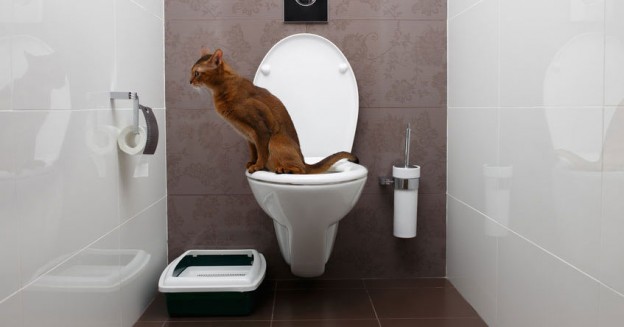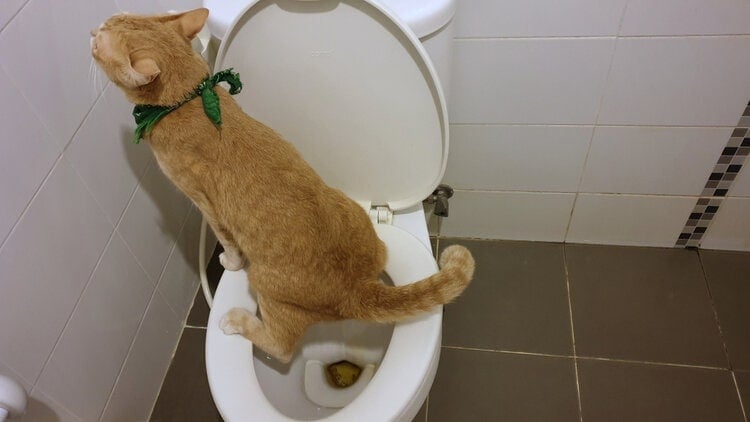Crucial Reasons Why Animal Waste Ought to Never Be Flushed Down the Toilet
Crucial Reasons Why Animal Waste Ought to Never Be Flushed Down the Toilet
Blog Article
What're your opinions regarding Should you flush animal waste down the toilet?

When it concerns disposing of waste, particularly animal waste, many people typically consider the practical alternative of flushing it down the toilet. Nonetheless, this seemingly easy service can have severe effects for the environment and public health. In this post, we'll explore why flushing pet waste down the bathroom is a negative idea and offer alternate approaches for correct disposal.
Introduction
Appropriate garbage disposal is important for keeping environmental sustainability and public health. While it might seem safe to flush animal waste down the bathroom, it can result in different concerns, both for the environment and human health.
Risks of flushing pet waste
Environmental effect
Purging pet waste presents unsafe germs and virus into rivers, which can negatively influence aquatic ecosystems. These pathogens can pollute water sources and harm marine life, interrupting fragile ecological communities.
Public health concerns
Animal waste includes damaging germs such as E. coli and Salmonella, which can position significant health risks to human beings. Purging animal waste down the bathroom can infect water supplies, bring about the spread of conditions and infections.
Alternatives to flushing
Rather than flushing animal waste down the toilet, there are numerous alternate disposal methods that are more eco-friendly and sanitary.
Composting
Composting pet waste is an eco-friendly method to take care of it. By composting, raw material is broken down into nutrient-rich dirt, which can be used to fertilize yards and plants.
Landfill disposal
Getting rid of pet waste in a landfill is an additional option. While not as eco-friendly as composting, it is a much safer option to flushing, as it avoids the contamination of water sources.
Family pet waste disposal systems
There are customized animal garbage disposal systems readily available that safely and hygienically get rid of pet waste. These systems usually make use of enzymes to break down waste and get rid of smells.
Actions to appropriate animal waste disposal
To make certain correct disposal of animal waste, follow these steps:
Scooping and bagging waste
Frequently scoop and bag pet waste making use of biodegradable bags. This stops waste from polluting the setting.
Making use of marked waste bins
Dispose of bagged pet waste in assigned waste bins, such as compost bins or land fill containers. Stay clear of flushing it down the bathroom whatsoever expenses.
Cleansing litter boxes and family pet locations routinely
Regularly clean can and pet locations to avoid the accumulation of waste and germs. Usage pet-safe cleansing items to maintain hygiene.
Benefits of correct disposal techniques
Adopting proper disposal techniques for pet waste uses several advantages:
Minimized environmental pollution
Appropriate disposal techniques lower the threat of environmental pollution, shielding rivers and ecological communities from contamination
Decreased threat of water contamination.
By staying clear of flushing pet waste down the bathroom, the danger of water contamination is considerably lowered, securing public health.
Boosted cleanliness and health
Appropriate disposal methods promote far better sanitation and health, producing a more secure atmosphere for both people and animals.
Final thought
Finally, purging pet waste down the bathroom is dangerous to the atmosphere and public health. By adopting alternate disposal approaches and following proper waste monitoring practices, we can reduce the negative impact of pet waste and contribute to a cleaner, healthier world.
What To Do With Dog Poo – The Do's And Don'ts Of Disposing Of Faeces
Dog poo bins
Some councils provide dedicated dog waste bins in popular dog-walking areas that can take dog poo that has been bagged but you can legally dispose of dog waste in any public litter bin, as long as it is securely bagged. This also applies to your wheelie bin at home.
Do not flush
Water companies do not recommend flushing dog faeces down the toilet because certain parasites can survive the water processing treatment and are potentially harmful to humans. You should also never consider flushing dog poo that has been bagged down the toilet as the bags will not break down and instead create severe blockages in the sewage system.
In the woods
The Forestry Commission promotes a ‘stick and flick’ method for dealing with waste in the woods. This means finding a stick and using it to flick any poo from off the path so that it is out of the way of other walkers. You could also bury it as long as it is not in an area where there might be livestock.
Livestock
Parasites found in dog poo can be transmitted to livestock if they inadvertently eat infected faeces that has been left on grazing land. This could result in the death of sheep or abortion in cattle so you should always make sure you pick up your dog’s waste in fields where livestock could be present.

Regularly clean can and pet locations to avoid the accumulation of waste and germs. Usage pet-safe cleansing items to maintain hygiene.
Benefits of correct disposal techniques
Adopting proper disposal techniques for pet waste uses several advantages:
Minimized environmental pollution
Appropriate disposal techniques lower the threat of environmental pollution, shielding rivers and ecological communities from contamination
Decreased threat of water contamination.
By staying clear of flushing pet waste down the bathroom, the danger of water contamination is considerably lowered, securing public health.
Boosted cleanliness and health
Appropriate disposal methods promote far better sanitation and health, producing a more secure atmosphere for both people and animals.
Final thought
Finally, purging pet waste down the bathroom is dangerous to the atmosphere and public health. By adopting alternate disposal approaches and following proper waste monitoring practices, we can reduce the negative impact of pet waste and contribute to a cleaner, healthier world.
What To Do With Dog Poo – The Do's And Don'ts Of Disposing Of Faeces
Dog poo bins
Some councils provide dedicated dog waste bins in popular dog-walking areas that can take dog poo that has been bagged but you can legally dispose of dog waste in any public litter bin, as long as it is securely bagged. This also applies to your wheelie bin at home.
Do not flush
Water companies do not recommend flushing dog faeces down the toilet because certain parasites can survive the water processing treatment and are potentially harmful to humans. You should also never consider flushing dog poo that has been bagged down the toilet as the bags will not break down and instead create severe blockages in the sewage system.
In the woods
The Forestry Commission promotes a ‘stick and flick’ method for dealing with waste in the woods. This means finding a stick and using it to flick any poo from off the path so that it is out of the way of other walkers. You could also bury it as long as it is not in an area where there might be livestock.
Livestock
Parasites found in dog poo can be transmitted to livestock if they inadvertently eat infected faeces that has been left on grazing land. This could result in the death of sheep or abortion in cattle so you should always make sure you pick up your dog’s waste in fields where livestock could be present.

Do you really like reading about 4 Reasons Why Dog Poop Cleanup is Important? Create a remark directly below. We would be happy to know your ideas about this blog post. Hoping that you come back again in the near future. Are you aware of anybody else who is looking into Don't Flush Your Pets Poo Down The Loo, Vet Warns? Feel free to promote it. I am grateful for your time. Revisit us soon.
Get Quote Report this page